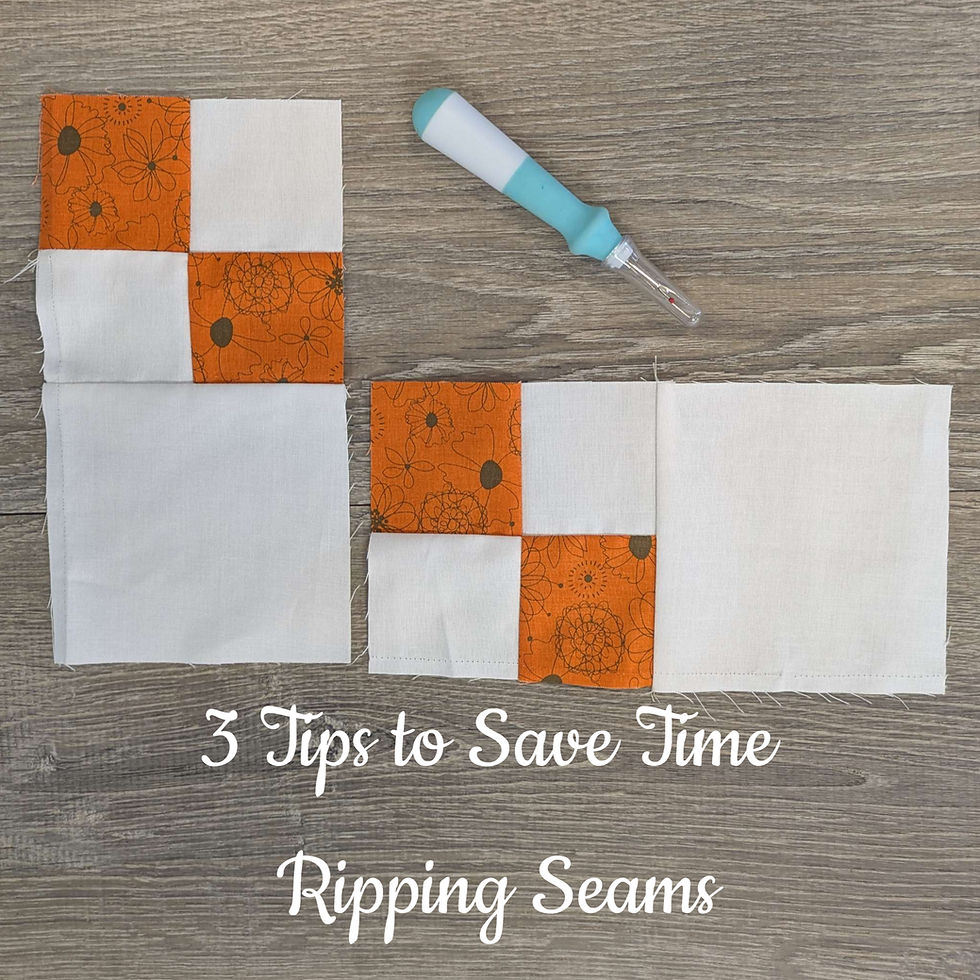How to Finish a Quilt with a Pillowcase Edge (No Binding)
- Tara Wright
- Nov 3, 2022
- 4 min read
Did you know you can finish a quilt WITHOUT binding? Similar to making bags, pillows, and many little sewn items you can finish your quilt or blanket project using a pillowcase edge.

A pillowcase edge is simply the turned edge you get when you sew two fabrics with right sides together and then turn them inside out.
This edge treatment is very useful in the following instances:
Odd-shaped quilt edge like scallops, diamonds, hexies, and tumblers
Reversible projects
Very different fabric choices on the front and back
Lack of time
Don't like binding quilts
Minimally used/washed item
Small projects
Lack of coordinating fabric (old/unfinished project)
I'm sure there are other reasons, but these are the ones that come to mind. So today I will walk you through the process I use to finish projects with this technique.
Things to Know Before You Start
This is a fairly simple process and one you may have used before without realizing its application to projects like quilts.
I use this technique most often when making bags, blankets with minky backing, table decor with odd edges, and reversible table decor projects.
There are a few things to watch out for when using this for quilts - it may change the quilting design you choose, and it's best if everything is the same size before sewing.
First, you can use this finishing method on quilt-as-you-go projects and then simply secure the back fabric with minimal straight-line quilting or hand-tying with thread or floss. Or if you want to quilt the front and back together (like a regular project) after completing the pillowcase edge - just realize that you don't have any extra side area for your hands to hold the project, so it makes it a little tricky to do free-motion quilting with lots of movement. It could also distort your quilt a little and make it have a slightly wavy edge. A way to avoid this is to use straight-line or walking-foot quilting around the edge to create a frame.

Secondly, your quilt top/front, backing, and batting (if used) need to be the same size so that you can accurately sew the seam edge. If you need to trim any of your pieces I detail my method below.
Let's Do It
If you're like me and don't have pieces that are the same size at the start - this is how I trim to size. I fold each piece in half, mark the centers (fold line) on each side, then place them right sides together lining up my center pins, put all of it on the batting, and then trim to the smaller size.

You can see all the seams from piecing in this photo because this is the "wrong" side.
Now it's time to make the pillowcase edge!
(If not squaring/trimming up...)
1) Start by laying down your batting, then lay your backing fabric on top of it with the right side up, and finish by placing the quilt top right side down on top of the backing. Smooth out everything and pin/clip in place.


2) Starting in the middle of one side, sew a 1/4" in from the edge all the way around your project and stop about 5" from your start (leave a hole). Lock-stitch your start and stop.

3) Trim the corners off to remove excess batting and fabric so your corners will be square (but slightly rounded). Be careful NOT to cut your stitches.
4) Stick your hand into the hole you left and pull your fabric inside out. Now you will see the right sides and enclose the seam on the inside. I usually grab the most opposite corner and pull it through first and then gently pull out the rest.

5) Run your finger along the seam to push it out and smooth it. One hand is on the inside and one is on the outside for this part. Follow up with a good press with your iron.

6) Next tuck in the unsewn fabric where your turning hole is and press. Then stitch closed with a running stitch or whip stitch using coordinating thread. Basically I stick my needle in and come out straight across, and then stick the needle in and travel up before coming out again. This allows you to show your thread a little but cover alot of space. I then make a double knot and sink it into the top layer of fabric.
7) I always add a topstitch about 1/4" from the new turned edge to secure it in place and add a professional look. If needed follow up with quilting as desired or consider your project finished.

And now you have a finished quilted item ready for gifting or use - Enjoy!
This finishing technique will also set you up for my next post on adding embellishments to your project edges - so your halfway there.
I love to see your work! Share your progress on social media by tagging me @polkadotpeepquiltsetc on Instagram or Facebook. Follow me on either platform for more quilty fun or sometimes cooking, family adventures, or other tidbits.
If you have questions, you can ask me in the comments or almost live by using the "Let's Chat" button.
Until next time - Be blessed my friends,
Tara




















Comments